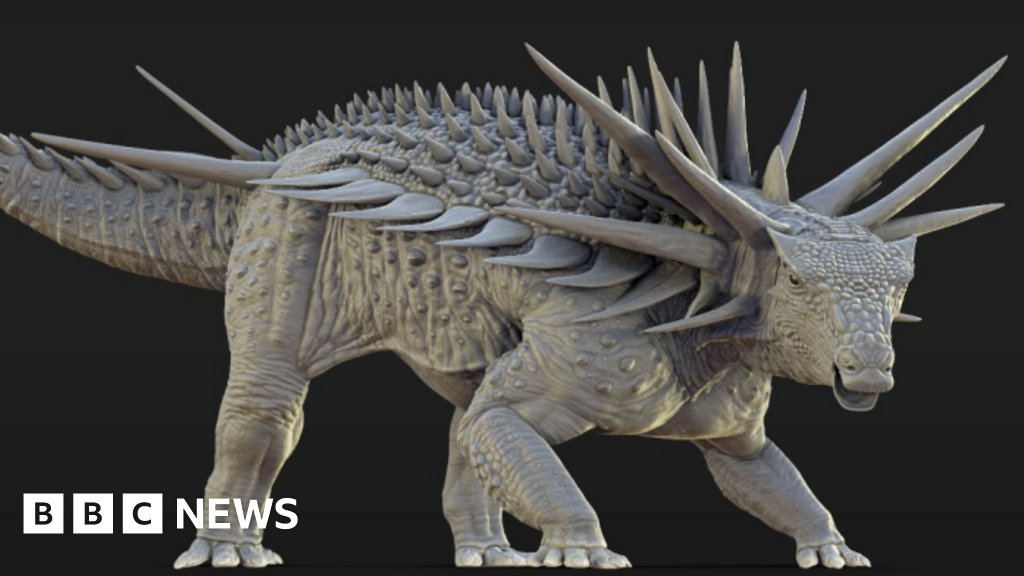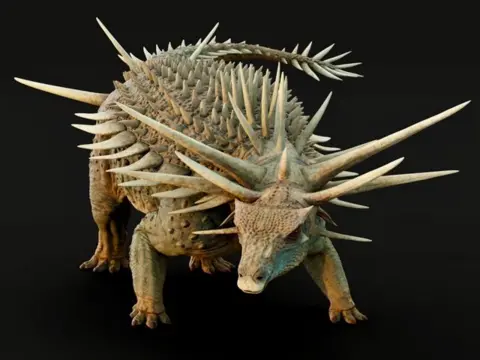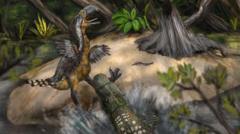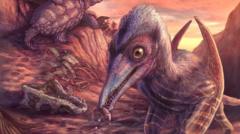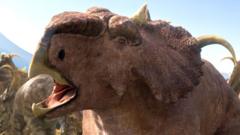In a groundbreaking revelation for paleontology, researchers have unearthed a new species of dinosaur that significantly alters the understanding of the tyrannosaur family lineage. Named Khankhuuluu mongoliensis, which translates to "Dragon Prince of Mongolia", this newly classified species has emerged from the depths of history, revealing itself through two well-preserved skeletons found in a Mongolian museum. According to a study published in the renowned journal Nature, this dinosaur is now recognized as the closest known ancestor to all tyrannosaurs, including the legendary T.rex.
Darla Zelenitsky, a paleontologist from the University of Calgary, described Khankhuuluu as a "transitional fossil" that bridges the gap between the smaller, agile predators of the Jurassic period and the large apex hunters that would follow. Measuring approximately 750 kilograms, Khankhuuluu is dwarfed by the adult T.rex, which could weigh as much as eight times that amount. Zelenitsky noted that this discovery has allowed researchers to revise the tyrannosaur family tree, enhancing our understanding of how these remarkable creatures evolved.
PhD student Jared Voris, who spearheaded the research, emphasized that the characteristics of Khankhuuluu, particularly its skull anatomy and jaw strength, foreshadow the powerful attributes seen in later tyrannosaurs. He explained, "We see features in its nasal bone that eventually gave tyrannosaurs those very powerful bite forces." These powerful jaws enabled T.rex and its descendants to prey on much larger animals, showcasing their dominance in the prehistoric ecosystem.
The two skeletons examined in the study were discovered in Mongolia during the early 1970s and were initially classified as a different species, Alectrosaurus. However, Voris's keen observation of their unique features led to the recognition of Khankhuuluu as a separate species altogether. The migration of tyrannosaurs between North America and Asia played a significant role in their evolutionary trajectory, with land bridges once connecting these regions allowing for a diverse spread of dinosaur species.
Zelenitsky concluded, "This discovery shows us that, before tyrannosaurs became the kings, they were princes," underscoring the importance of understanding the evolutionary narrative that precedes these iconic dinosaurs. As paleontologists continue to explore ancient fossils, each new find brings us closer to comprehending the majestic world of the dinosaurs that roamed our planet millions of years ago.
Darla Zelenitsky, a paleontologist from the University of Calgary, described Khankhuuluu as a "transitional fossil" that bridges the gap between the smaller, agile predators of the Jurassic period and the large apex hunters that would follow. Measuring approximately 750 kilograms, Khankhuuluu is dwarfed by the adult T.rex, which could weigh as much as eight times that amount. Zelenitsky noted that this discovery has allowed researchers to revise the tyrannosaur family tree, enhancing our understanding of how these remarkable creatures evolved.
PhD student Jared Voris, who spearheaded the research, emphasized that the characteristics of Khankhuuluu, particularly its skull anatomy and jaw strength, foreshadow the powerful attributes seen in later tyrannosaurs. He explained, "We see features in its nasal bone that eventually gave tyrannosaurs those very powerful bite forces." These powerful jaws enabled T.rex and its descendants to prey on much larger animals, showcasing their dominance in the prehistoric ecosystem.
The two skeletons examined in the study were discovered in Mongolia during the early 1970s and were initially classified as a different species, Alectrosaurus. However, Voris's keen observation of their unique features led to the recognition of Khankhuuluu as a separate species altogether. The migration of tyrannosaurs between North America and Asia played a significant role in their evolutionary trajectory, with land bridges once connecting these regions allowing for a diverse spread of dinosaur species.
Zelenitsky concluded, "This discovery shows us that, before tyrannosaurs became the kings, they were princes," underscoring the importance of understanding the evolutionary narrative that precedes these iconic dinosaurs. As paleontologists continue to explore ancient fossils, each new find brings us closer to comprehending the majestic world of the dinosaurs that roamed our planet millions of years ago.







